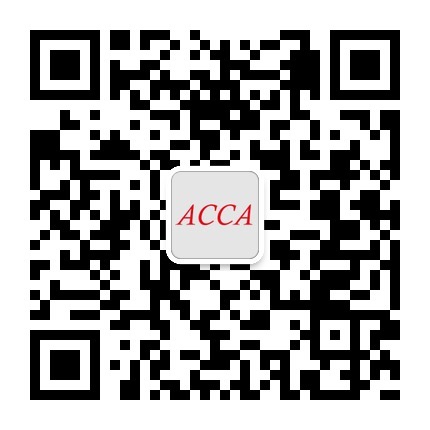

1、凡本网站注明“来源高顿教育”或“来源高顿网校”或“来源高顿”,的所有作品,均为本网站合法拥有版权的作品,未经本网站授权,任何媒体、网站、个人不得转载、链接、转帖或以其他方式使用。
2、经本网站合法授权的,应在授权范围内使用,且使用时必须注明“来源高顿网校”或“来源高顿”,并不得对作品中出现的“高顿”字样进行删减、替换等。违反上述声明者,本网站将依法追究其法律责任。
3、本网站的部分资料转载自互联网,均尽力标明作者和出处。本网站转载的目的在于传递更多信息,并不意味着赞同其观点或证实其描述,本网站不对其真实性负责。
4、如您认为本网站刊载作品涉及版权等问题,请与本网站联系(邮箱fawu@gaodun.com,电话:021-31587497),本网站核实确认后会尽快予以处理。
23年12月acca考试今天就开考了,本次考季参加考试的同学们现在是不是有些紧张呢?考场中有一些需要注意的事项,考生们来了解一些,不要违反考试纪律...
2023-12-04日前,全球广受认可的专业会计师机构ACCA(特许公认会计师公会)在ACCA年度大会上选出庞锐兴(Ronnie Patton)出任新一届全球会长。来自北爱尔兰的庞锐兴...
2023-11-30acca在财会界证书类的考试中,难度算是比较高的,它是国际性的证书,考试是全球统一的,都是采用全英文形式考试,加上考试科目多,备考起来是比较困...
2023-11-3023年的acca考试已经接近尾声,想要在下一个考季报考acca的考生们现在就可以开始报名了,目前24年3月acca考试的常规报名正在进行中,早点完成报名可以尽...
2023-11-30acca被认为是国际财会界的通行证,是特许公认会计师公会的简称,在国际上有着很高的认可度,国内也有越来越多的人报考acca,那么,报考ACCA需要有工作...
2023-11-30acca是英国的特许公认会计师,在国际上拥有很高的认可度,被认为是国际财会界的通行证,对职业发展是很有帮助的,很多考生可能比较关心acca对进入四...
2023-11-2923年12月acca考试很快就要到来了,考试结束后大家最关心的就是考试成绩了,有些考生可能还没弄清楚23年12月acca考试什么时候出成绩以及成绩查询的方式,...
2023-11-29距离23年12月acca还有不到一周的时间,在考试之前,大家需要了解一下acca考前注意事项,避免在考场上出现违规的情况,下面,就跟着高顿学姐一起来看看...
2023-11-29参加12月线下季考的考生,需要下载并打印准考证 12月20日起准考证陆续开放下载,考生可通过myACCA进行下载。 *如有部分学员暂时未被确定考点,待考点...
2023-11-2163题E选项为何不选啊!持有公司发行股份5%前五名股东单位任职人员不能担任,10%已经大于5%不是应该能担任吗?如果不能担任,范围是多少
资本公积的计算过程不理解
B为什么不对呢
老师:可以分别和我说一下: 1.非货币性资产交换:双方的入账价值和差额怎么确认吗 2.债务重组的:双方入账价值和差额分别怎么确认 3.长期股权投资:初始投资成本,初始入账价值 这几个概念经常弄晕
77题C选项不是应该1%,为什么C正确
63题E选项为何不选啊!持有公司发行股份5%前五名股东单位任职人员不能担任,10%已经大于5%不是应该能担任吗?如果不能担任,范围是多少
资本公积的计算过程不理解
B为什么不对呢
老师:可以分别和我说一下: 1.非货币性资产交换:双方的入账价值和差额怎么确认吗 2.债务重组的:双方入账价值和差额分别怎么确认 3.长期股权投资:初始投资成本,初始入账价值 这几个概念经常弄晕
77题C选项不是应该1%,为什么C正确
acca考试的科目多,加上是全英文的考试形式,对于国内的考生来说,备考acca的是比较困难的,需要花几年的时间去准备,很多考生可能会问acca自学难度有多大?报班的话推荐哪家这样的问题,今天,就跟着高顿学姐一起来看看吧!...
2023-11-15距离12月考季acca的考试还有不到一个月的时间,在考试前,大家除了要全力冲刺考试,在准考证打印通道开放后,要及时打印准考证,做好充分的准备,还需要了解一下考试的注意事项,今天,就跟着高顿学姐一起来看看吧!...
2023-11-13acca一共有15门科目,各科目的难度是逐渐增加的,前面的科目自学通过的几率还是比较大的,后面的科目难度较大,很多考生会选择报班来学习,今天,我们就一起来看看ACCA培训费用多少?培训机构哪家好?...
2023-11-02近日,acca官方公布了24年3月和6月考季的报名和考试时间,准备明年报考acca考试的考生们可以提前了解一下,为参加明年的acca考试做准备了,今天,高顿学姐就来给大家介绍一下24年6月acca报考时间,一起来看看吧!...
2023-11-02近日,上海市人力资源和社会保障局发布《关于本市对境外职业资格证书清单项目持证人员提供便利保障服务及职称比照认定的通知》,为持有国际职业资质认证的人员在上海的落户和发展提供了更便捷的服务。其中,ACCA在《通知》中获得高度认证。通知内容详见下文。...
2023-10-20通过ACCA的课程学习和考试,学员可以获得国际视野和跨文化交流的能力,这对于在全球化的今天尤为重要。在现代经济日新月异的环境下,ACCA的专业性和影响力得到了广泛认可,越来越多的人积极参与到ACCA的学习和认证中来。那么,昆士兰大学在校可以考acca吗?今天,就跟着高顿学姐一起来看看吧!...
2023-10-18ACCA的课程结构不仅注重理论知识的掌握,还强调实际应用能力的培养,使得学员能够更好地适应职场需求。在全球经济持续发展的趋势下,ACCA的专业性和认可度日益提高,越来越多的职场人士将其视为职业发展的重要保障。那么,澳大利亚国立大学在校可以考acca吗?今天,就跟着高顿学姐一起来看看吧!.........
2023-10-18acca是英国的特许公认会计师公会,和国内的cpa一样,都是财会界含金量很高的证书之一,很多人会比较想了解acca和国内注册会计师对比哪个更难,今天,高顿小编就来给大家详细介绍一下。...
2023-10-162023年的acca考试只剩下最后一个考季的考试安排了,有报考计划的考生可以抓紧时间完成报名了,很多暂时没有报考计划的考生也比较关心24年会计专业acca考试考什么?今天这篇文章就来给大家介绍一下!...
2023-10-16ACCA(国际注册会计师)是全球范围内最具影响力的会计师资格认证之一。然而,对于在澳洲想要获得ACCA资格证书的人来说,他们会担心一个问题:澳洲ACCA含金量怎么样?今天,就跟着高顿学姐一起来看看吧!...
2023-10-16